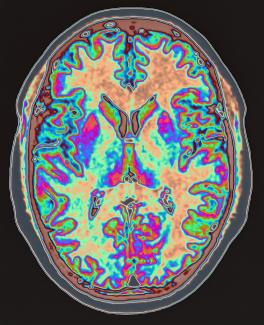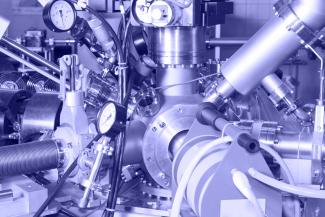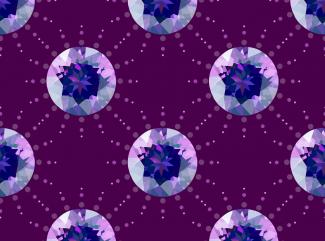
EquipEx+ 2020 - almost half of the winners are associated with Université Paris-Saclay
Strengthening the competitiveness of French research by supporting new joint scientific facilities which meet the highest international performance standards: this is the goal of the call for expressions of interest (AMI - appel à manifestation d’intérêt) “Structuring infrastructure for research” by the “Programme d’investissement d’avenir” (PIA - Investment programme for the future) 3, or ESR/EquipEx+, which was launched on 2 January 2020. After an international panel assessed the 135 projects submitted, 52 were officially named winners on 18 December. At least 23 projects involving laboratories within the scope of Université Paris-Saclay featured amongst the lucky winners, with the University providing the scientific leadership for five of these projects. Spanning fields as diverse as energy, environment, health and digital technology, they are a testament to the quality, vitality and openness of the research carried out at the university.
In a context of increased international competition, the use of quality scientific facilities is a major issue for French research. The latter contributes to the increase in scientific production and promotes collaborations, not only between teams and disciplines, but also between public and private research. In this sense, everyone is in agreement that they act as powerful triggers in terms of innovation.
Facilities to provide French leadership in science
The State, aware of the importance of this issue, has already undertaken major efforts within the framework of PIA 1 and PIA 2 to provide French research with interim structuring facilities. With the PIA 3, it is taking a further step by supporting largely pooled facilities on a national scale which will enable French research to host experiments conducted by national and international researchers in the best possible conditions.
The goal of this new stage is to support French scientific leadership and strengthen the influence and appeal of French research. This is a goal to which Université Paris-Saclay is fully committed as it is involved at different levels in at least 23 of the 52 projects which will share the M€422 overall funding linked to EquipEx+.
Université Paris-Saclay - at the spearhead of five winning projects
With over a dozen “Équipements d’excellence” (EquipEx or Facilities of excellence) already funded within its scope, Université Paris-Saclay is also moving up a gear by committing to new national projects over the next five to ten years. This rapid increase is due to the involvement of its researchers. The university’s research personnel have, whatever their field, been able to build bridges, create partnerships, foster an interdisciplinary approach and unite around them the driving forces needed to meet the scientific challenges of tomorrow. It is not therefore surprising that five of the EquipEx+ accredited projects are currently being coordinated by researchers from a laboratory under the supervision of Université Paris-Saclay.
PRESENCE, a unique 11.7 tesla MRI platform for brain imaging
Cyril Poupon is one of the researchers. As co-director of the BAOBAB laboratory (Université Paris-Saclay, CNRS, CEA) in the NeuroSpin department, he is coordinating the PRESENCE project whose objective is to achieve the installation of a new generation of MRI scanners with an intense magnetic field. This project is also involving the Neuroimagerie cognitive (Cognitive neuroimaging) laboratory (UNICOG - Université Paris-Saclay, Inserm, CEA, CNRS), the PARIETAL team (Université Paris-Saclay, Inria, CEA), the Unité de recherche en neuroimagerie applicative clinique et translationnelle (UNIACT (Clinical and Translational Neuroimaging Research Unit) - Université Paris-Saclay, CEA), the Département des accélérateurs, de cryogénie et de magnétisme (DACM (Department of Accelerators, Cryogenics and Magnetism) – Université Paris-Saclay, CEA) and the Département d'ingénierie des systèmes (DIS (Systems Engineering Department) – Université Paris-Saclay, CEA) of the Institut de recherche sur les lois fondamentales de l’Univers (Institute for Research on the Fundamental Laws of the Universe - Irfu). “This project, which is the result of an idea born in the 2000s within the Paris-Saclay campus, would not have been possible without the CEA researchers at the time taking the gamble of designing an ultra-powerful magnet to increase the resolution of brain imaging data,” explains Cyril Poupon. This bold gamble was taken by the Department of basic research at the CEA which, thanks to fifteen years of collaboration between neuro-imaging researchers from the Institut des sciences du vivant Frédéric Joliot (Institute of Life Sciences Frédéric Joliot) at the CEA and the expert physicists in electromagnetism from the Irfu, made it possible to develop and install an ultra-powerful magnet at Neurospin which reached a magnetic field of 11.7 teslas in 2019. After a period in which the installation of the electronic equipment and tests will be completed, this unique MRI platform should produce its first images by the end of 2021. “By opening up this platform - which is capable of probing the human brain with ever greater precision - to academic and private researchers, we hope to respond, on the one hand, to the challenges of fundamental research in neuroscience and, on the other, to the health needs related to progressive neurological (Alzheimer's or Parkinson's disease) and psychiatric (autism, bipolar disorders) disorders,” concludes Cyril Poupon.
Pacifics - initiative accelerators for future innovative systems
Pacifics is another project which is being led by physicists at Paris-Saclay which aims to develop and strengthen the R&D infrastructure needed to develop the accelerators of tomorrow. “We are fortunate to have, in addition to the accelerators we have built and operated within the Paris-Saclay campus, two teams which have greatly contributed to developments in this field. These teams are Accelerators from Irfu at CEA and the Laboratoire de physique des deux infinis – Irène Joliot-Curie (IJCLab - Laboratory of Physics of the Two Infinities - Irène Joliot-Curie),” explains Sébastien Bousson, deputy scientific director for accelerator physics at IJCLab (Université Paris-Saclay, CNRS, Université de Paris) and coordinator for the Pacifics project. This is a widely recognised strong leading team to which the Laboratoire de physique subatomique et cosmologie (LPSC (Subatomic Physics and Cosmology Laboratory) – CNRS, Université Grenoble Alpes) in Grenoble is affiliated within the context of this project. Its objective is to advance the field of accelerators around four scientific focal points. These are R&D on high-performance magnets, R&D on radiofrequency acceleration in superconductivity, the study of a new concept of laser-plasma acceleration, and R&D on new-generation high-performance ion sources. “With this project, which clearly does not start from a blank sheet of paper, we aim to strengthen the effective collaboration of the various organizations and as a result keep the French teams at the forefront of innovation for the next 30 years,” concludes Sébastien Bousson.
BioCF - the first national central biobank
With the BioCF biobank project in the field of life science and health, “the goal is to catch up with our European colleagues,” says Gianluca Severi from the outset. He coordinates the project and leads the Exposome et hérédité (Exposome and heredity) team at the Centre de recherche en épidémiologie et santé des populations (CESP (Centre for Research in Epidemiology and Public Health) - Université Paris-Saclay, UVSQ, Inserm). He and his team have been in charge of the large E3N-E4N family cohort study for years and are convinced that it is now time to go further in order to better position France in an international competitive context. This is why, within the context of the BioCF project, his team will be working closely with units in charge of other French cohorts, including the Cohortes épidémiologiques en population unit (CONSTANCES (Population-based Epidemiological Cohorts) - Université Paris-Saclay, UVSQ, Inserm), to the setup of the first national central biobank based on the epidemiological data taken from these cohorts. “In addition to pooling information on the hundreds of thousands of volunteers participating in these cohorts and standardizing our methods, this national biobank should enable us to enrich the collection of biological samples, test new analysis methods and develop large-scale genotyping. These advances will help boost our ability to identify risk-related biomarkers and early detection of disease,” explains Gianluca Severi. This will also be of interest to pharmaceutical companies and will ensure the biobank’s development.
Continuum - collaborative research focused on visualisation, immersion, and interaction
“Transforming the way we perceive, interact and collaborate with digital data by putting people back at the centre of the analysis process.” This is how Michel Beaudouin-Lafon, a professor at Université Paris-Saclay and a researcher at the Laboratoire interdisciplinaire des sciences du numérique (LISN (Interdisciplinary Laboratory for Digital Sciences) - Université Paris-Saclay, CNRS, Inria, CentraleSupélec) sums up the aim of the Continuum project which he is coordinating. How will this be done? By creating a collaborative research infrastructure of 30 platforms for interaction, immersion, visualization and collaboration. “At the heart of this project, which will involve no less than 22 partners and 37 teams, we will work around two main areas of focus, namely the strengthening of interdisciplinary research at the interface of digital and social sciences, and the deployment of tools and services for and with other disciplines and areas of application.” The units involved include the Laboratoire atmosphères, milieux, observations spatiales (LATMOS (Atmospheres, Environments, Space Observations Laboratory) – Université Paris-Saclay, UVSQ, CNRS), the Maison de la simulation (Simulation Centre) (Université Paris-Saclay, UVSQ, CNRS, CEA), the Laboratoire d'intégration de systèmes et de technologies (List (Systems and Technology Integration Laboratory) – Université Paris-Saclay, CEA), the Mathématiques et informatique pour la complexité et les systèmes (Mathematics and Computer Science for Complexity and Systems) laboratory (MICS - Université Paris-Saclay, CentraleSupélec), the Laboratoire de génie industriel (LGI (Industrial Engineering Laboratory) - Université Paris-Saclay, CentraleSupélec), the Laboratoire des signaux et systèmes (L2S (Signals and Systems Laboratory) - Université Paris-Saclay, CNRS, CentraleSupélec), the Centre de vision numérique (Digital Vision Centre) (Université Paris-Saclay, CentraleSupélec), the Laboratoire de mécanique des sols, structures et matériaux (MSSMAT (Soil Mechanics, Structures and Materials Laboratory) - Université Paris-Saclay, CNRS, CentraleSupélec) and the Institut Farman (Université Paris-Saclay, CNRS, ENS Paris-Saclay). Among the services envisaged are software support for remote collaboration, the organisation of large-scale experiments and the loan of mobile equipment for on-boarding new users. “These two areas of focus (research and services) are closely linked. We are convinced that it is by remaining in tune with the habits of external users that we will be able to direct our research in the right direction and thus maintain our leading position,” concludes Michel Beaudouin-Lafon.
e-Diamant - diamonds for scientific applications
Designing “perfectly imperfect” diamonds is the surprising aim of the e-Diamant project, coordinated by Jean-François Roch, a professor at ENS Paris-Saclay and a researcher at the Laboratoire lumière, matière et interfaces (LuMin (Light, matter and interfaces laboratory) - Université Paris-Saclay, ENS Paris-Saclay, CNRS, CentraleSupélec). It is for a good reason as certain “defects” give diamonds specific optical, electrical and magnetic properties which are useful for the development of quantum sensors. Planned to last six years, this project will draw on the skills and expertise of ten academic partners, including LuMin, the List, the Centre de nanosciences et de nanotechnologie (C2N (Centre for Nanoscience and Nanotechnology) - Université Paris-Saclay, CNRS, Université de Paris), the unité mixte de physique CNRS/Thales (UMPhy (joint CNRS/Thales physics unit) - Université Paris-Saclay, CNRS, Thales), the Groupe d'études de la matière condensée (GEMAC (Condensed matter study group) – Université Paris-Saclay, UVSQ, CNRS) and the company Thales for the development of the tools needed to improve the quantum properties of this exceptional material.
Teams involved in eighteen projects being led by other establishments
In addition to facilities where they are project leaders, many teams from Université Paris-Saclay are taking part in all areas in EquipEx+ projects being managed by other establishments. These include health, with the France-cryo-EM project, or, through the SOLEIL synchrotron and the Institut de biologie intégrative de la cellule (I2BC (Institute for Integrative Cell Biology) - Université Paris-Saclay, CEA, CNRS) teams are contributing to the national instrumentation in cryo-electron microscopy. There is also astrophysics, with the F-CELT project looking at the instrumentation of the Extremely Large Telescope where the Astrophysique, instrumentation, modélisation (Astrophysics, instrumentation, modelling) laboratory (AIM – Université Paris-Saclay, CNRS, CEA) is involved. Energy, digital and environment are also included with the GAIA Data project for the development of a data and services infrastructure for the observation, modelling and understanding of the Earth system, biodiversity and the environment, for which the Laboratoire des sciences du climat et de l'environnement (LSCE (Laboratory for Climate and Environmental Science) – Université Paris-Saclay, CNRS, CEA, UVSQ) is involved. There seems to be no areas where their expertise is not now needed! Collaborations between the social sciences and humanities and other fields is also important, such as the IDEE project (Innovation, data and experimentation in education), which the Neuroimagerie cognitive (Cognitive neuroimaging) laboratory (UNICOG - Université Paris-Saclay, Inserm, CEA, CNRS) is taking part in order to set up large-scale studies in schools and position France as a leader in experimental research in education.
The teams are particularly active on the material sciences front, whether in the area of Industry 4.0, as in the case of the Add4P project involving the additive manufacturing of glasses and components for photonics in which List is taking part, or in the field of nanotechnology and nanomanufacturing with the Nanofutur project in which C2N is participating. French accelerators are being taken to a new level, as in the case of the Newgain project in which the IJCLab and Irfu are participating. There is also building, testing and operating an all-superconducting 40 Tesla magnet, as with the FASUM project, in which Irfu is involved.
They are also very well positioned in three major projects related to digital and computer sciences. These include the Tirrex robotics platform project which List is involved in, the Mesonet project for the development of structuring digital equipment which involves Mésocentre Fusion @Paris-Saclay (Université Paris-Saclay, ENS Paris-Saclay, CentraleSupélec), and the Espadon project which aims to make available instrumental facilities, resources and digital expertise to the heritage science community in which teams from the Centre d’histoire culturelle des sociétés contemporaines (CHCSC (Centre for the Cultural History of Contemporary Societies) – Université Paris-Saclay, UVSQ), the Institut DATAIA, the Données et algorithmes pour une ville intelligente et durable (Data and algorithms for a smart and sustainable city) laboratory (DAVID – Université Paris-Saclay, UVSQ), the Dynamiques patrimoniales et culturelles, Antiquités, Moyen-Age, Temps modernes (Heritage and cultural dynamics, Antiquities, Middle Ages, Modern times) laboratory (DYPAC – Université Paris-Saclay, UVSQ), the Institutions et dynamiques historiques de l'économie et de la société (Institutions and historical dynamics of the economy and society) laboratory (IDHES - Université Paris-Saclay, Univ. d’Évry, ENS Paris-Saclay, CNRS), the Institut photonique d'analyse non-destructive européen des matériaux anciens (IPANEMA (European Photonic Institute for Non-destructive Analysis of Ancient Materials) – Université Paris-Saclay, CNRS, UVSQ), the Institut des sciences sociales du politique (ISP (Institute of Social Sciences of Politics) - Université Paris-Saclay, ENS Paris-Saclay, CNRS), the Laboratoire archéomatériaux et prévision de l'altération (LAPA, Archaeomaterials and weathering prediction laboratory), the Nanosciences et innovation pour les matériaux, la biomédecine et l'énergie (Nanoscience and innovation for materials, biomedicine and energy) laboratory (NIMBE – Université Paris-Saclay, CEA, CNRS), the Systèmes et applications des technologies de l'information et de l'énergie (Information and Energy Technology Systems and Applications) laboratory (SATIE - Université Paris-Saclay, ENS Paris-Saclay, CNRS) and the Service d'études analytiques et de réactivité des surfaces (SEARS (Analytical studies and surface reactivity service) – Université Paris-Saclay, CEA) are involved.
Teams are also involved in several BioMed award-winning projects. One example is the ALADIN project, which is aiming to accelerate the development of industrial biological catalysts for efficient and sustainable production processes in which the Microbiologie de l'alimentation au service de la santé humaine (Food microbiology for human health) institute (Micalis - Université Paris-Saclay, INRAE, AgroParisTech) and Genoscope, (Université Paris-Saclay, CEA) are participating. The latter is also taking part in the AO-EMBRC project, which is aiming to develop “augmented marine observatories” for the “Centre national de ressources biologiques marines” (National Centre for Marine Biological Resources) and the Tara project. There is also the MuDiS4LS project which is focusing on shared digital spaces for the production of FAIR data in biology and health in which the Mathématiques et informatique appliquées du génome à l'environnement (Applied mathematics and computer science from the genome to the environment) laboratory (MAIAGE – Université Paris-Saclay, INRAE) is taking part. The METex+ project, in which the Médicaments et technologies pour la santé (Medicines and technologies for health) laboratory (MTS - Université Paris-Saclay, CEA, INRAE) is taking part is aiming to develop the national metabolomics and fluxomics MetaboHUB facility which develops and disseminates state-of-the-art methods and tools.
The strength of the research carried out by Université Paris-Saclay can be seen in the number of laboratories involved in projects at a national level, particularly those related to the environment. These include five laboratories, in addition to the SOLEIL synchrotron - the IJCLab, the Laboratoire de physique des gaz et des plasmas (LPGP (Gas and Plasma Physics Laboratory) - Université Paris-Saclay, CNRS), the laboratoire Charles Fabry (LCF - Université Paris-Saclay, Institut d'Optique Graduate School, CNRS), the Laboratoire Aimé Cotton (LAC - Université Paris-Saclay, CNRS) and the Institut des sciences moléculaires d'Orsay (ISMO (Orsay Institute of Molecular Sciences) - Université Paris-Saclay, CNRS). They will be involved in the T-Refimeve project whose objective is to provide the scientific and industrial communities with a complete set of time and frequency signals at the best international level. Three other laboratories - LSCE, LATMOS and the Écologie fonctionnelle et écotoxicologie des agroécosystèmes (Functional ecology and ecotoxicology of agroecosystems) laboratory (ECOSYS - Université Paris-Saclay, INRAE, AgroParisTech) are taking part in the OBS4CLIM integrated observation system for the atmosphere project. Two laboratories (LSCE and ECOSYS) are taking part in the Imagine 2 national platform for analysis and management of environmental and energy transition.
This is a fine list of awards, which will undoubtedly help to reinforce the major role played by Université Paris-Saclay in the future in the competitiveness of French research!





